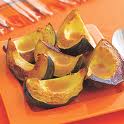What is Manganese?
- Manganese is an essential mineral involved in the formation of bone.
- It also plays a role in specific reactions related to amino acid, cholesterol, and carbohydrate metabolism.
- Manganese is a micronutrient or trace element, meaning this element is present in the body in small amounts.
- Interactions among minerals may occur as a result of diet. These interactions can be helpful or competitive. For example, high levels of manganese can affect iron metabolism.
- Manganese is essential for normal skeletal and connective tissue development.
- It is involved in the syntheses of fatty acids and cholesterol and the excretion of nitrogen from our bodies.
- Dietary sources include: nuts, whole grains, legumes, green leafy vegetables, dried fruits, fresh fruits, and non-leafy vegetables.
http://www.eatright.org/ada/files/Eat_Your_Way_to_Better_Health.pdf
Vegetarian Chili
Serving Size: 1/4 of recipe
Yield: 4 servings
Ingredients:
2 large onions - cut into 1/4 inch pieces
1 green bell pepper - cut into 1/4 inch pieces
3 garlic cloves
2 fresh, diced jalapeno chilis
2 Tablespoons vegetable-oil
1 Tablespoon chili powder
1 Tablespoon ground cumin
1 can (28 ounce) whole tomatoes - cut into 1/4 inch pieces (or 8 medium fresh tomatoes)
2 medium zucchini - cut into 1/4 inch pieces
2 medium summer squash - cut in to 1/4 inch pieces
1 can (16 ounce) ounces rinsed kidney beans
1 cup chopped, fresh cilantro (or coriander)
salt and pepper to taste
Instructions:
- In a large pot saute onions, bell pepper, garlic, and jalapeno in oil over medium high heat for about 5 minutes - stirring often.
- Add chili powder, cumin, half of the chopped cilantro, salt and pepper, and continue cooking for another 3 minutes, stirring occasionally.
- Add the tomatoes, zucchini, squash, and bring mixture to a simmer.
- Simmer for 15 minutes, stirring occasionally.
- Add beans, and continue to simmer for another 5 minutes.
- Serve the mixture hot. Put remaining cilantro on top.
Per Recipe: $ 6.24
Per Serving: $ 1.56







